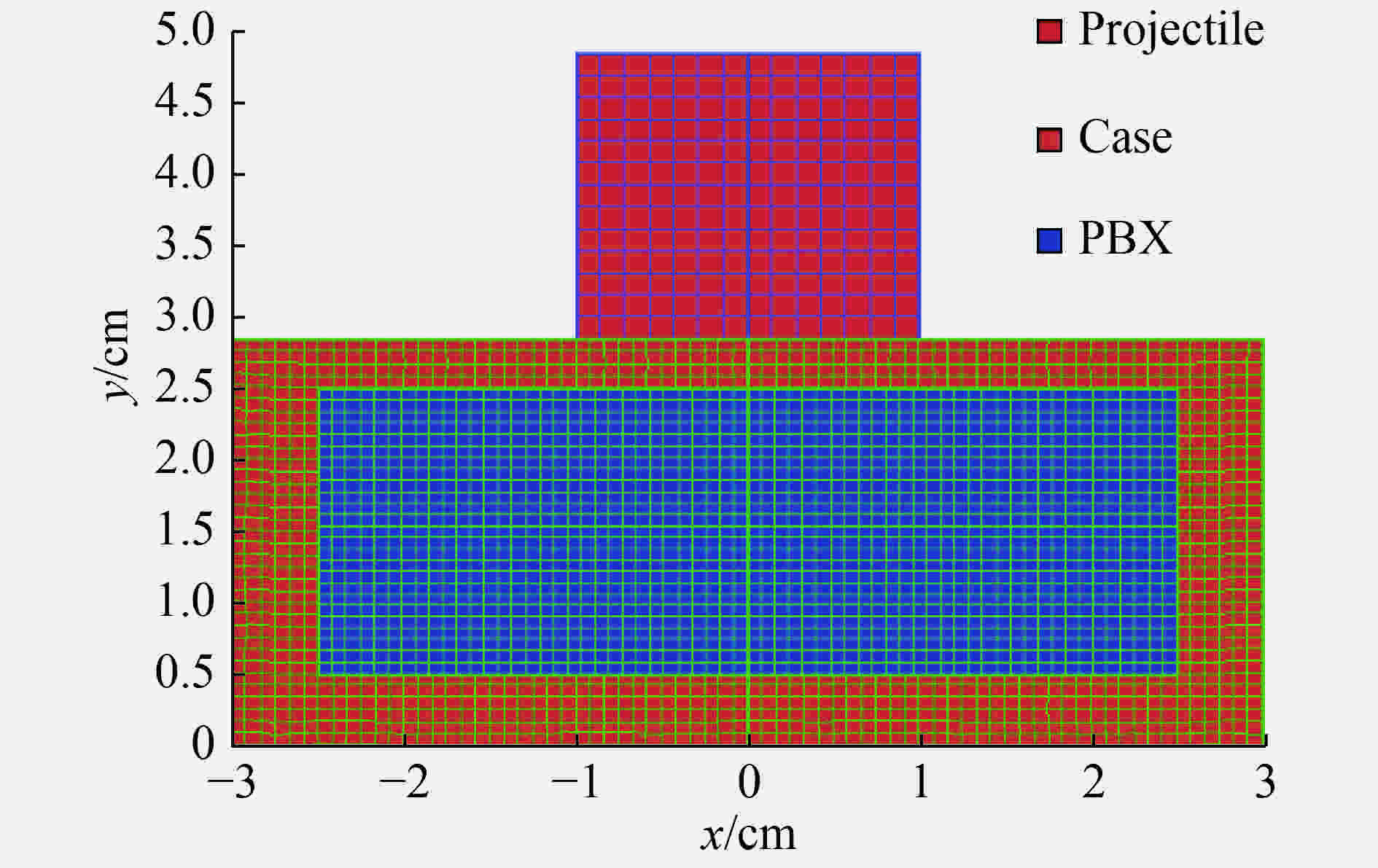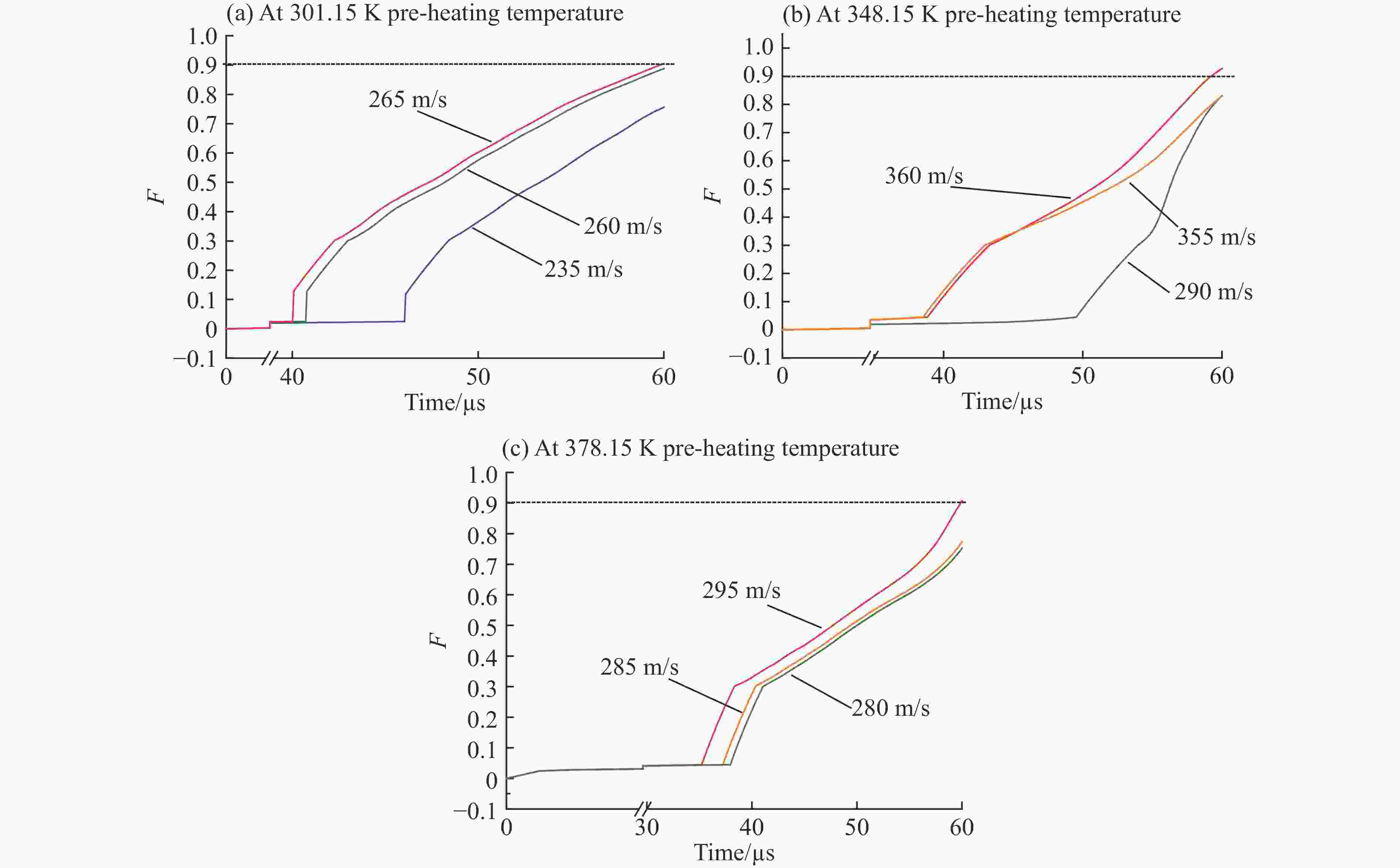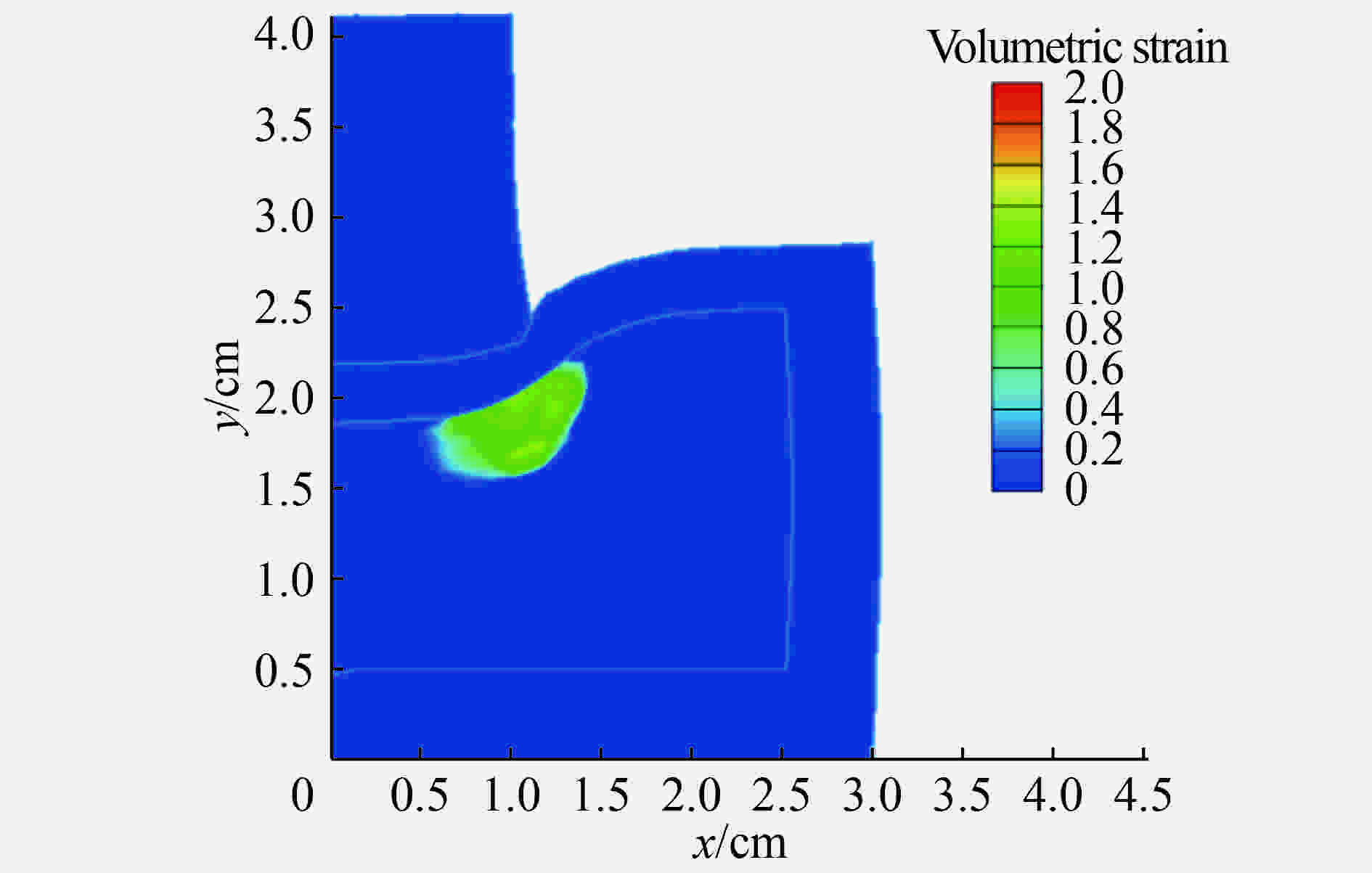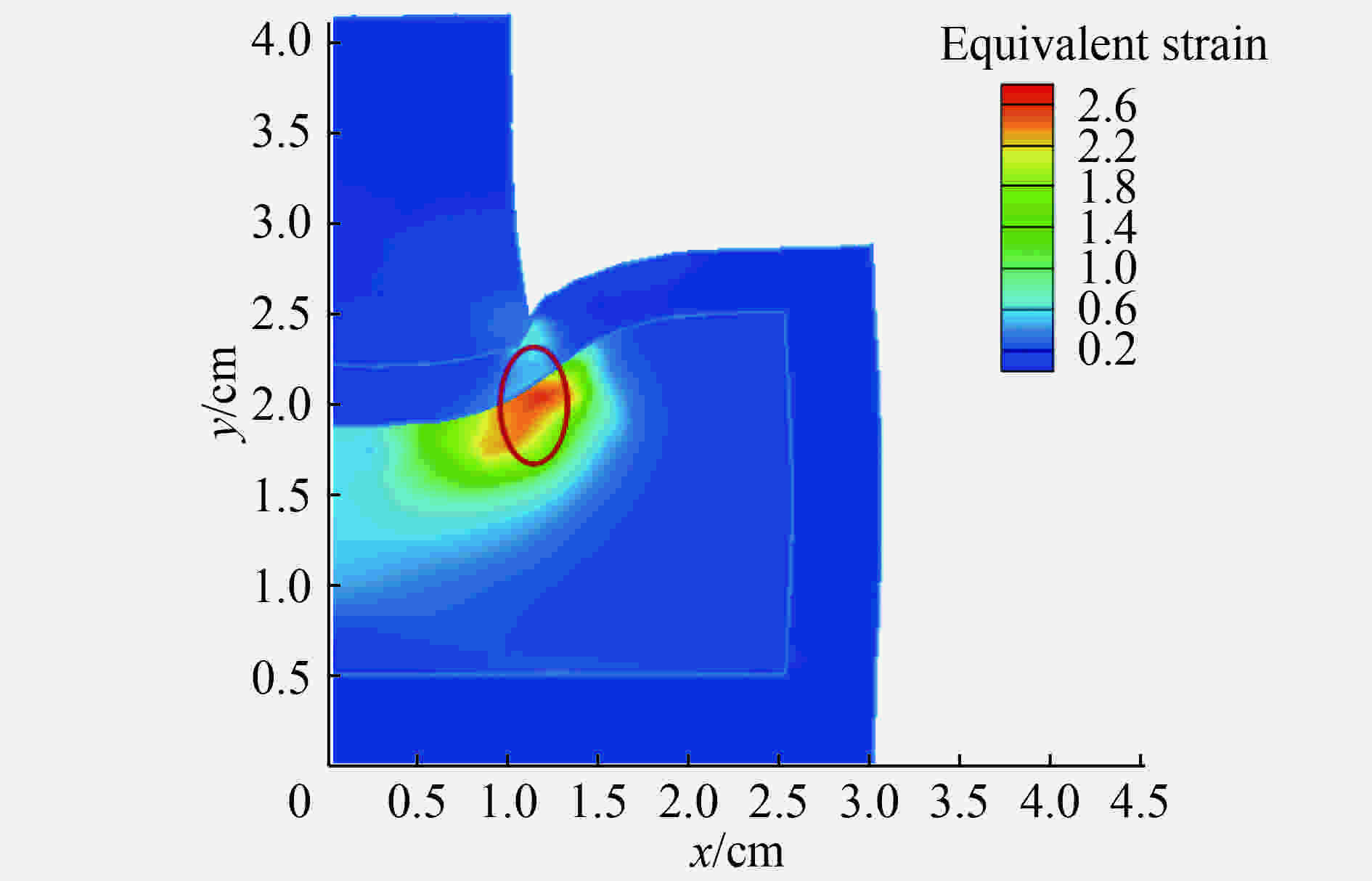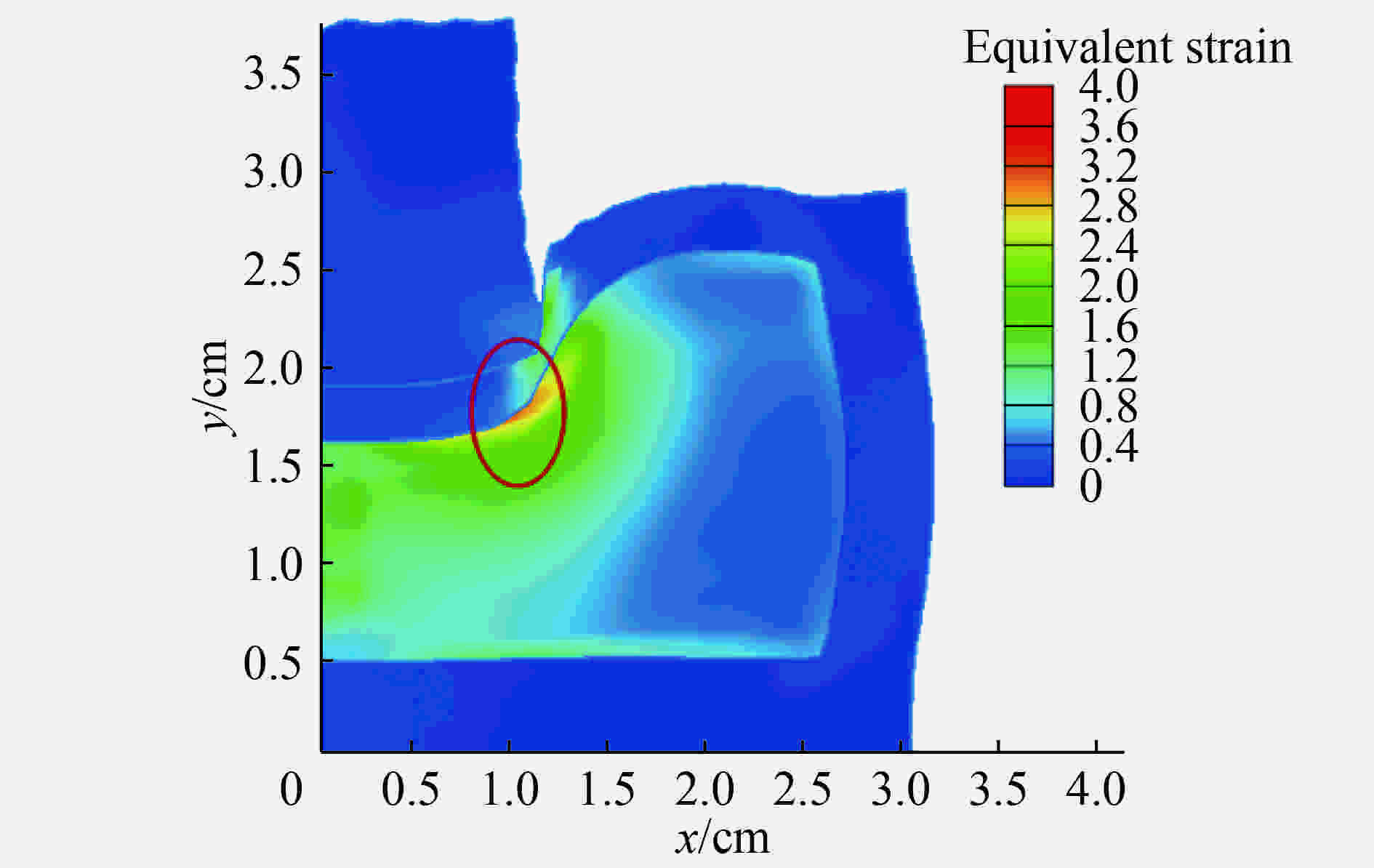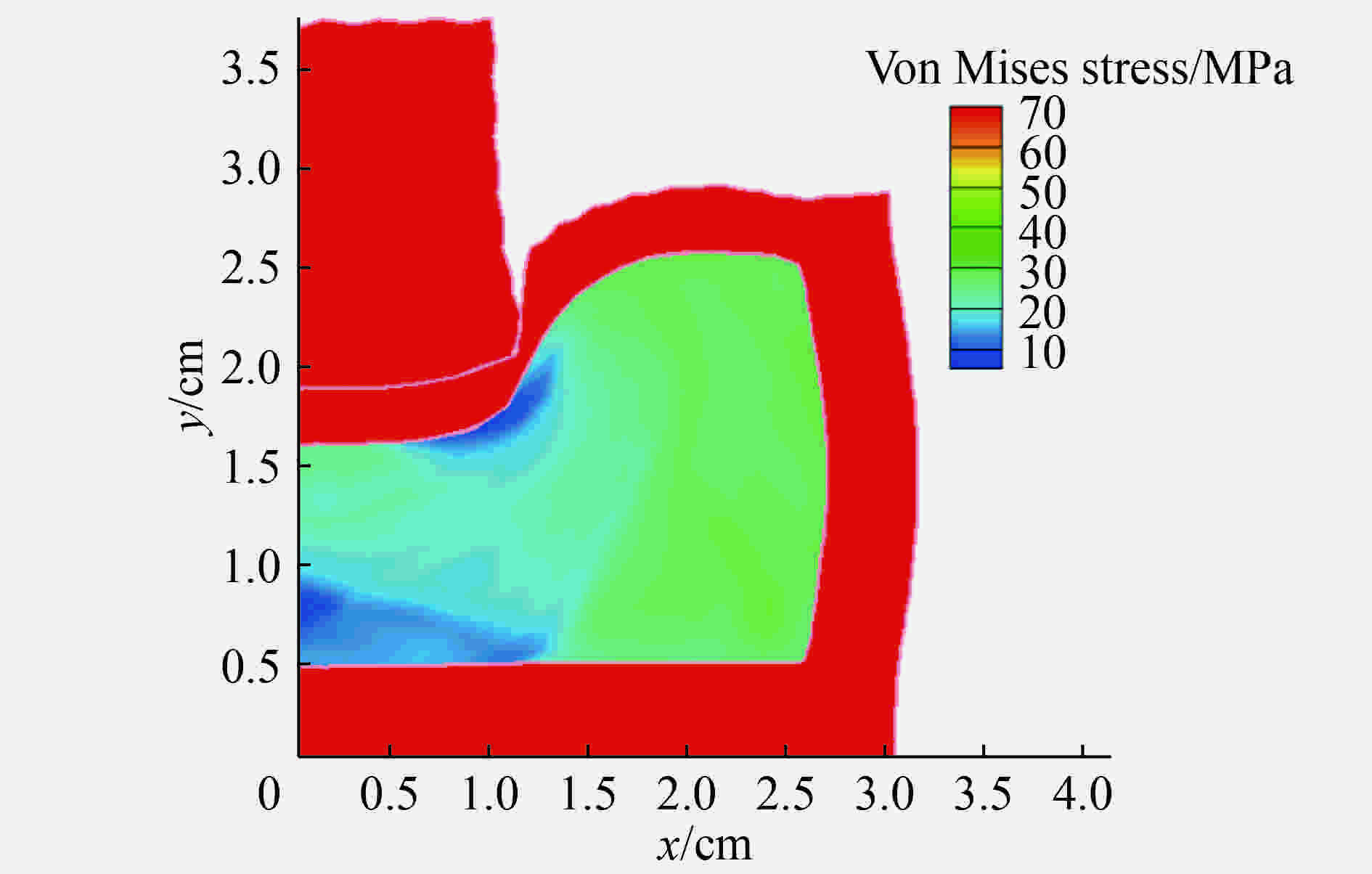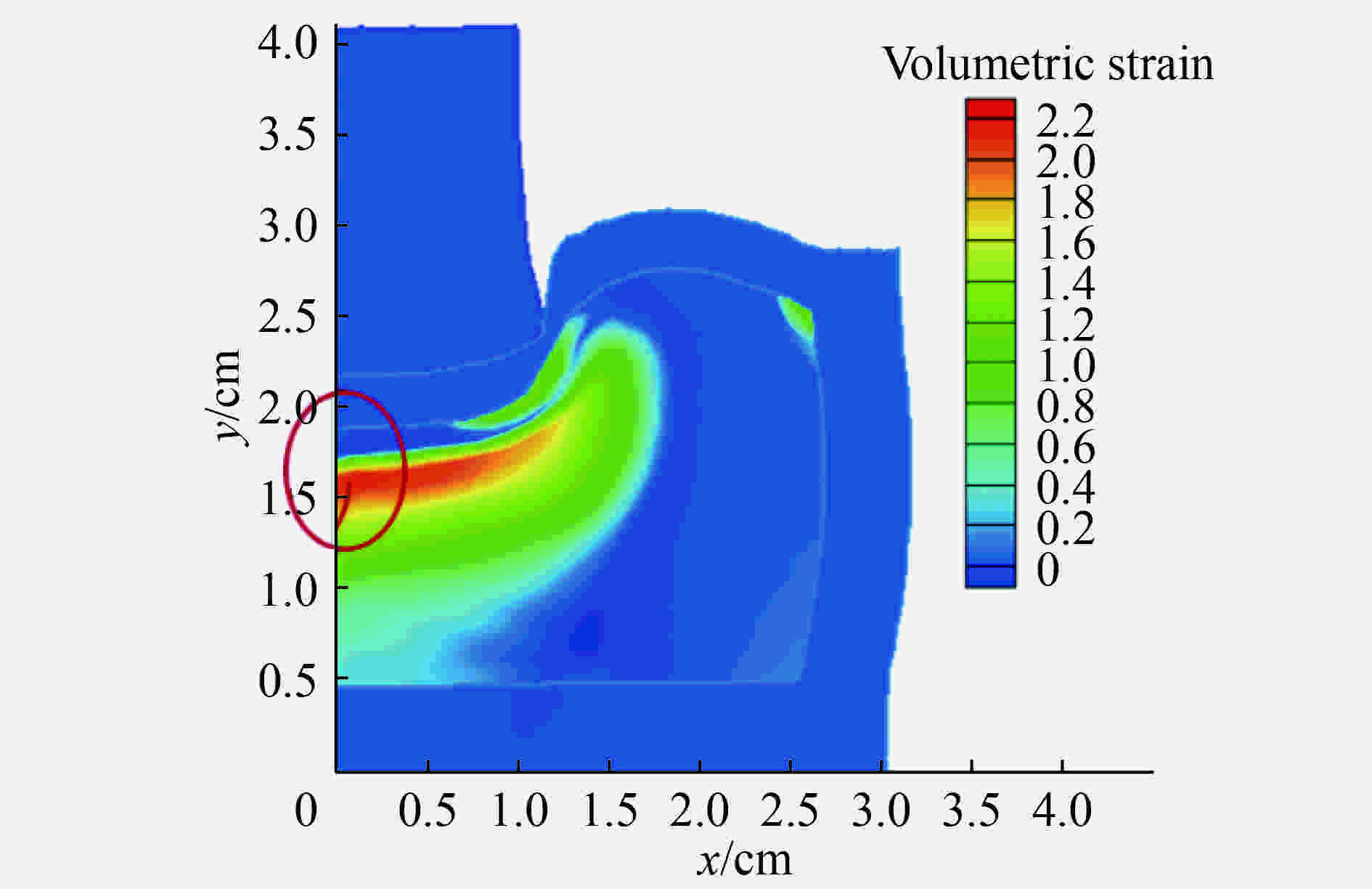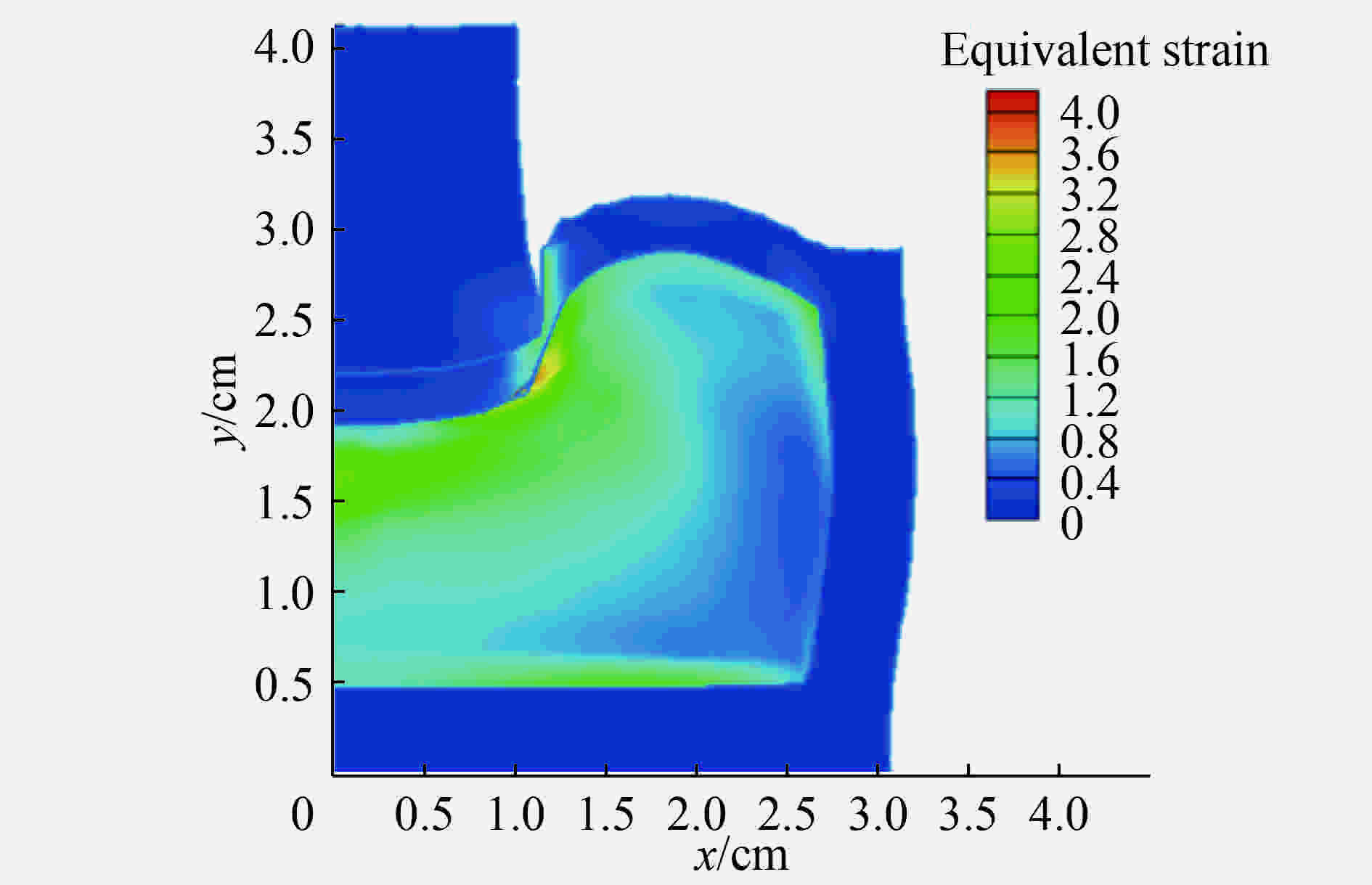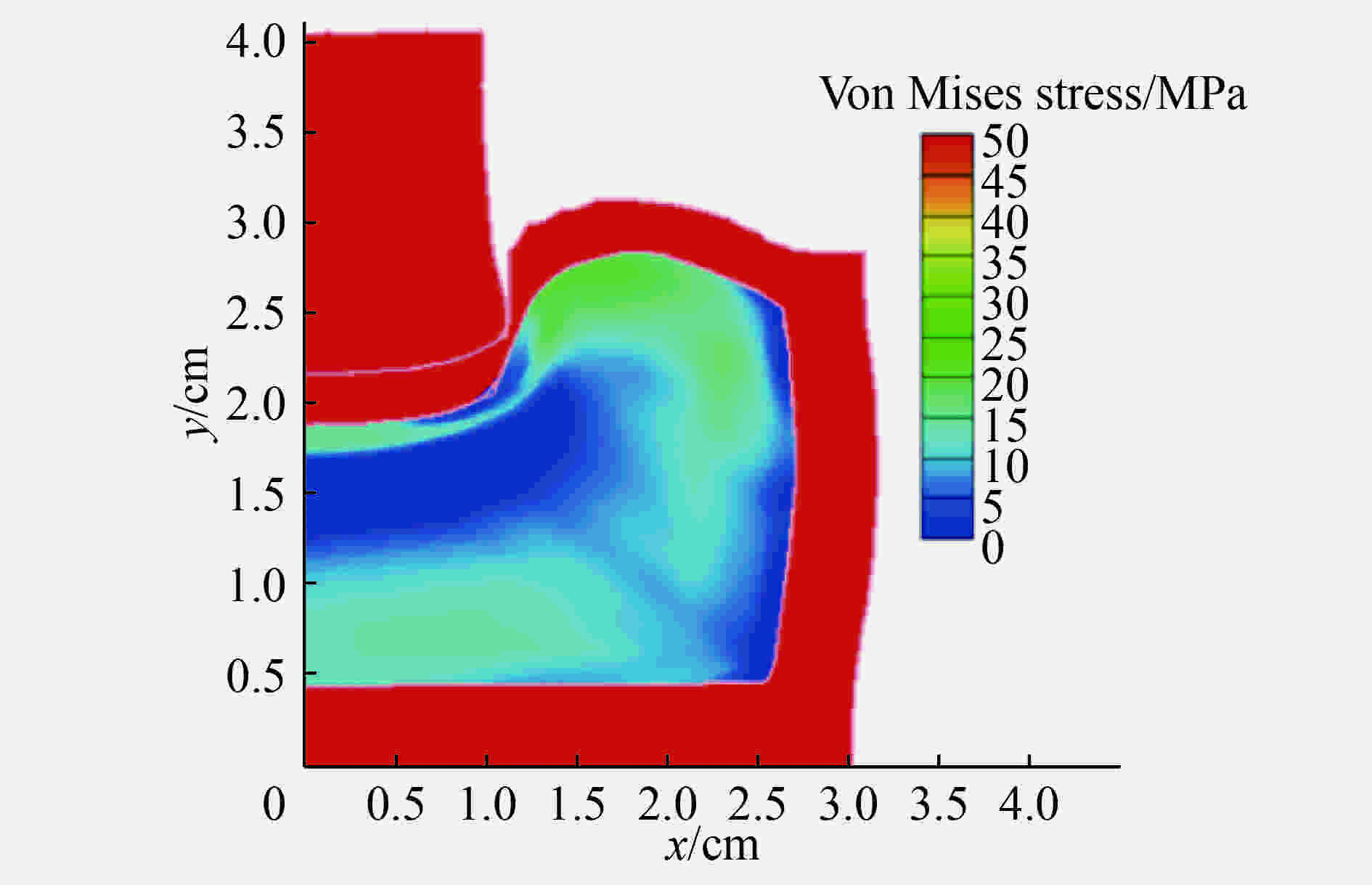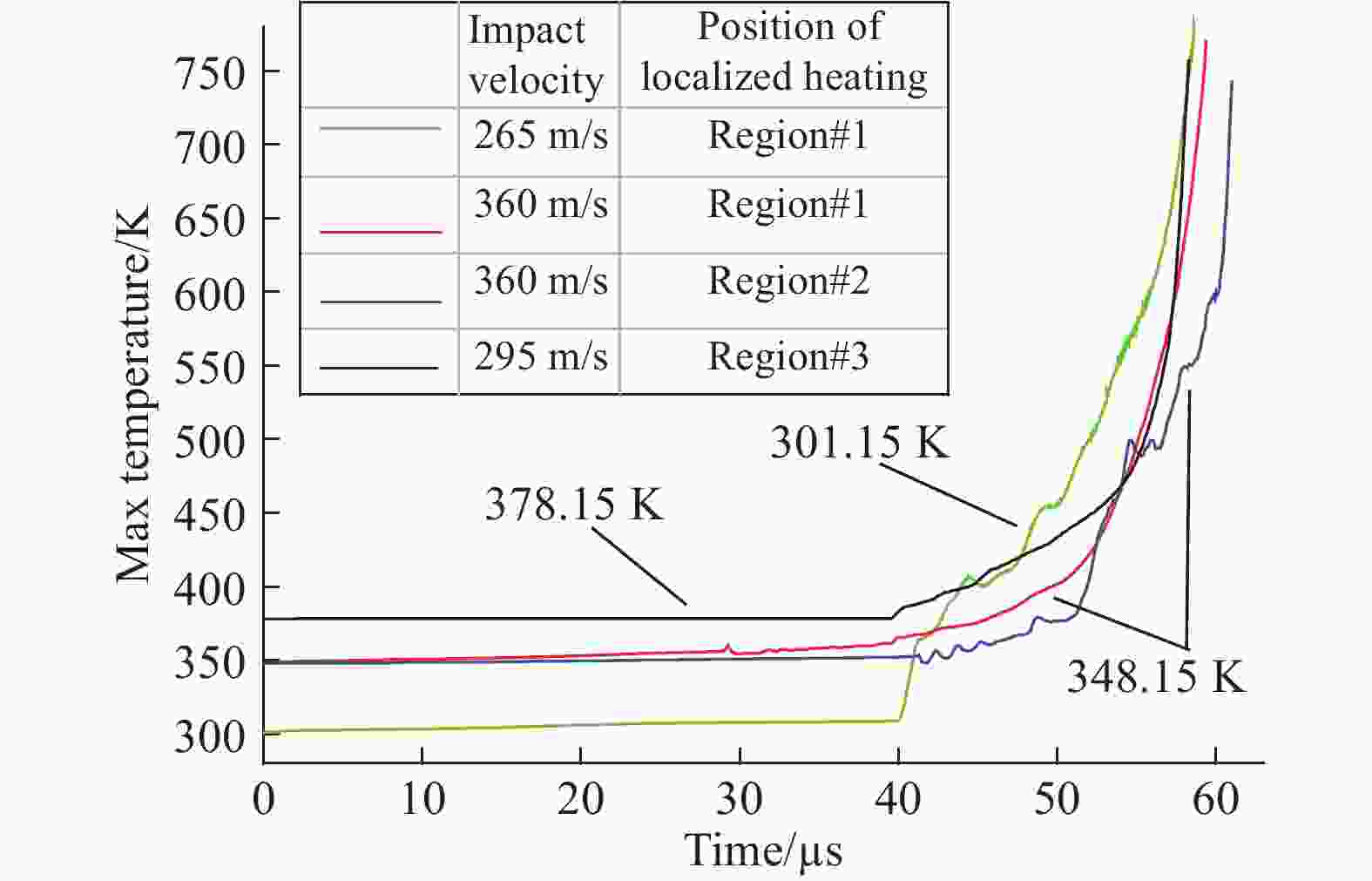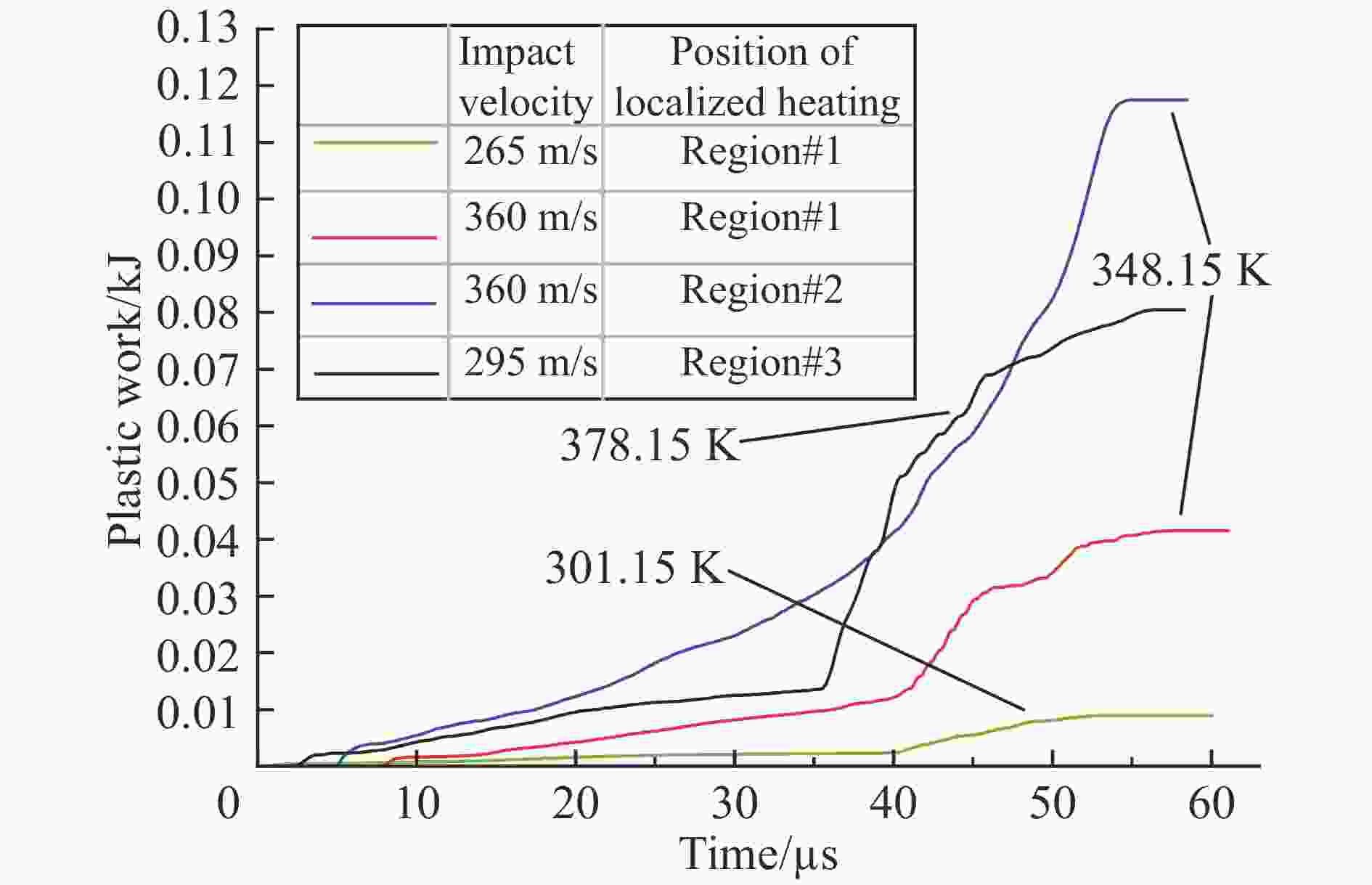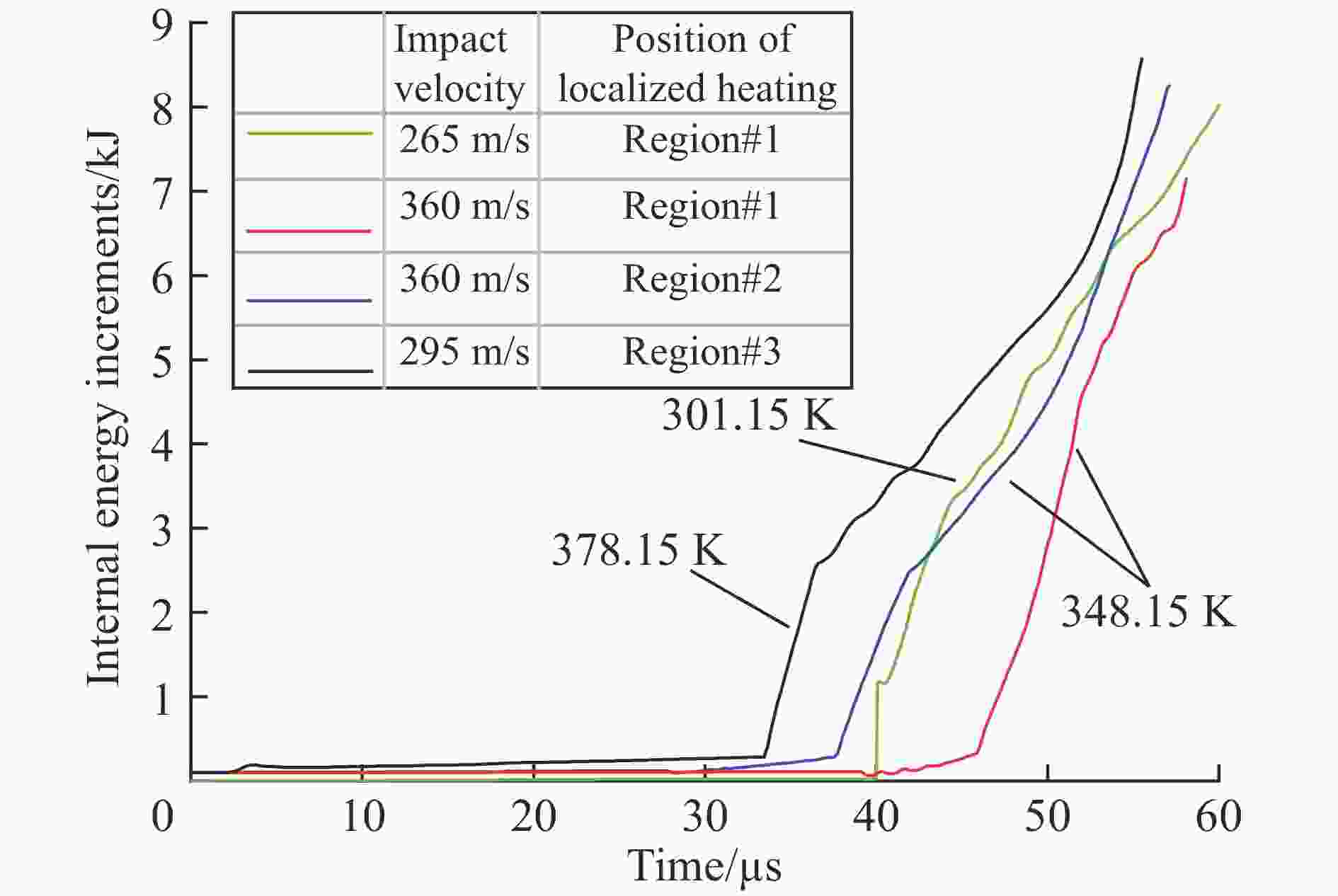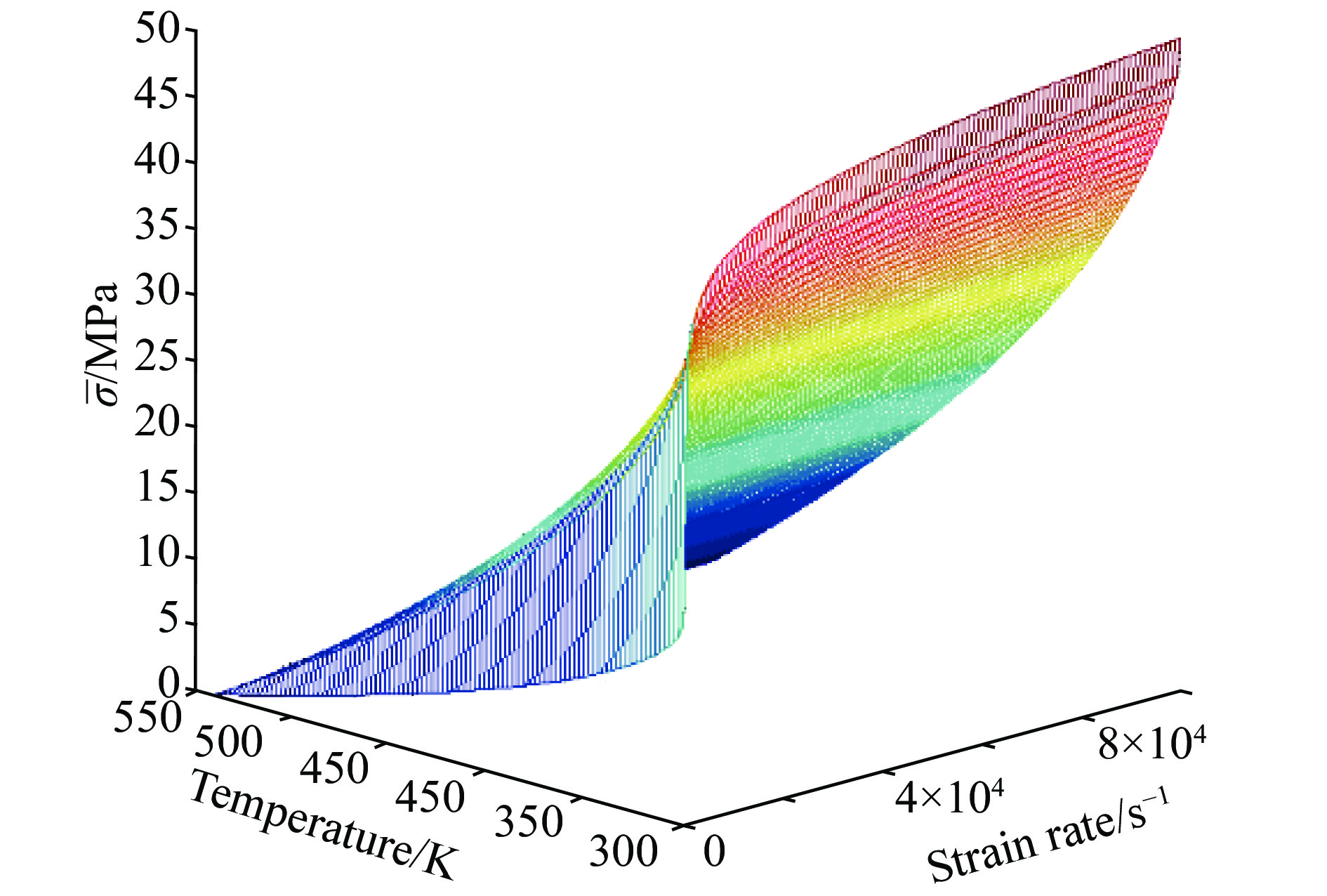Numerical simulation of confined PBX charge under low velocity impact at high temperature
-
摘要:
炸药撞击感度和热安全性是评价炸药安全性能的重要指标。为了对高温下炸药撞击敏感性变化规律进行可靠预测,本文中通过数值模拟,研究不同预加热温度下带壳PBX炸药装药在小弹丸低速撞击下的热力学响应,得到炸药点火前至点火阶段局部高温区的位置、形态、温度和应变随时间在炸药中分布的变化。结果显示,炸药发生点火的撞击阈值速度与烤燃温度的关系并非单一随温度升高而降低,而是在加热至348.15 K时达到最高;根据温度和应力应变云图分析可得,随着烤燃温度的提高,炸药强度下降,PBX炸药装药局部高温区快速升温的主导因素由局部剪切变为压缩。热软化对炸药的撞击敏感性起重要作用。
Abstract:Accidental initiations of the explosive subjected to mechanical or thermal loads have caused numerous catastrophic tragedies. The impact sensitivity and thermal safety of explosive is of great importance for the applications. Previous work showed an evident decline on modulus with increasing cook-off temperature, which suggest that Cook-off temperature may affect the deformation process of the impacted PBX, and further affect the critical impact velocities for initiation. In this work, to investigate the mechanical and thermal response of confined PBX charge under low velocity impact of a small projectile during cook-off events, a finite-element model was established to provide reliable prediction of explosive safety performance at high temperature. A thermal-mechanical-combined experiments from literature enabled comparisons between simulated results and measured data for the critical impact velocities of initiation for a HMX-based PBX charge (HMX/TATB/olefin). The simulation results showed that when it was heated up to 348.15 K, the critical impact velocity of initiation for the explosives reached the maximum (360 m/s). With the increase of cook-off temperature, the localized heating regions change from the surface of explosive charge to the center. This phenomenon was caused by the effect of compression overshadows shearing on the initiation because of the strength decreases in the heated PBX, implying that thermal softening plays an important role in the impact sensitivity of the heated PBX charge.
-
Key words:
- PBX /
- thermal-mechanical coupling /
- impact /
- sensitivity
-
图 1 使用表1参数的应变率-温度-最大流动应力曲面图
Figure 1. Maximum flow stress as a function of temperature and strain rate at selected parameters
表 1 Johnson–Cook强度模型参数
Table 1. Parameters of Johnson–Cook model
A/MPa B/MPa C m n Tref/K Tm/K 15 0 0.2 0.6 1 301.15 540 表 2 固体反应物的状态方程参数
Table 2. Equation of the state parameters for solid reactants
pcrush/MPa μcrush K1 K2 K3 Klock μlock 0.689 5 0.125×10−3 0.102 7×1011 0.217 2×1012 0.288 8×1013 0.665 4×1011 0.09 表 3 气体产物的状态方程参数
Table 3. Equation of the state parameters for gaseous products
R1/GPa R2 R3/GPa R4 ω 166.89 5.9 5.969 2.1 0.45 表 4 PBX化学动力学参数
Table 4. Chemical kinetic parameters for PBX
No. Zk/s−1 Ea k/(kJ·g−1·mol·K) 1 1.08×1026 148.93 2 1.41×1021 220.64 3 2.60×1016 185.48 表 5 用于温度计算的参数
Table 5. Parameters for temperature calculation
TCJ/K vCJ/cm3/g R5/GPa CV, s/(J·kg−1·K−1) CV, CJ/(J·kg−1·K−1) 2 500 0.387 3 0.85 1 600 2 000 -
[1] KIM S, BARUA A, HORIE Y, et al. Prediction of probabilistic ignition behavior of PBXs from microstructural stochasticity[C]// Biennial International Conference of the APS Topical Group on Shock Compression of Condensed Matter, 2013. [2] PERRY W L, ZUCKER J, DICKSON P M, et al. Interplay of explosive thermal reaction dynamics and structural confinement [J]. Journal of Applied Physics, 2007, 101(7): 074901–5. DOI: 10.1063/1.2713090. [3] ASANTE D O, KIM S, CHAE J, et al. CFD cook-off simulation and thermal decomposition of confined high energetic material [J]. Propellants Explosives Pyrotechnics, 2015, 40(5): 699–705. DOI: 10.1002/prep.201400296. [4] CHIDESTER S K, GREEN L G, LEE C G. A frictional work predictive method for the initiation of solid high explosives from low-pressure impacts[R]. California, the United States: Lawrence Livermore National Laboratory, 1993. [5] BERGHOUT H L, SON S F, SKIDMORE C B, et al. Combustion of damaged PBX 9501 explosive [J]. Thermochimica Acta, 2002, 384(1-2): 261–77. DOI: 10.1016/S0040-6031(01)00802-4. [6] 张文英, 邓晓雅, 陈思瑾, 等. PBX9501热感度、热膨胀及力学性能的分子动力学模拟 [J]. 火炸药学报, 2016, 39(3): 32–6. DOI: 10.14077/j.issn.1007-7812.2016.03.006ZHANG Wenying, DENG Xiaoya, CHEN Sijin, et al. Molecular dynamics simulation of thermal sensitivity, thermal expansion and mechanical properties of PBX9501 [J]. Chinese Journal of Explosives and Propellants, 2016, 39(3): 32–6. DOI: 10.14077/j.issn.1007-7812.2016.03.006 [7] SHUKLA P, DEEPU M. Experimental and numerical investigations of thermal ignition of a phase changing energetic material [J]. Defence Science Journal, 2016, 66(3): 228–35. DOI: 10.14429/dsj.66.9357. [8] DICKSON P, ASAY B, HENSON B, et al. Thermal cook-off response of confined PBX 9501[C]//Proceedings of the Royal Society of London A: Mathematical, Physical and Engineering Sciences, 2004. [9] BURNHAM K, WEESE R K, WEMHOFF A P, et al. A historical and current perspective on predicting thermal cookoff behavior [J]. Journal of Thermal Analysis and Calorimetry, 2007, 89(2): 407–15. DOI: 10.1007/s10973-006-8161-6. [10] GUSHANOV A R, VOLODINA N A, BELOV G V, et al. Numerical simulation of experiments on the low- velocity impact on HMX- based HE using explosive transformation initiation kinetics [J]. Journal of Energetic Materials, 2010, 28(S1): 50–65. DOI: 10.1080/07370651003720429. [11] DRODGE D R, WILLIAMSON D M. Understanding damage in polymer-bonded explosive composites [J]. Journal of Materials Science, 2016, 51(2): 668–79. DOI: 10.1007/s10853-013-7378-6. [12] WILLEY T M, LAUDERBACH L, GAGLIARDI F, et al. Mesoscale evolution of voids and microstructural changes in HMX-based explosives during heating through the beta-delta phase transition [J]. Journal of Applied Physics, 2015, 118(5): 055901. DOI: 10.1063/1.4927614. [13] YAN Q L, ZEMAN S, SANCHEZ-JIMENEZ P E, et al. The effect of polymer matrices on the thermal hazard properties of RDX-based PBXs by using model-free and combined kinetic analysis [J]. Journal of Hazardous Materials, 2014, 271(1): 85–95. DOI: 10.1016/j.jhazmat.2014.02:019. [14] FORBES J, TARVER C, URTIEW P, et al. The effects of confinement and temperature on the shock sensitivity of solid explosives[C]//The 11th International Detonation Symposium. Snowmass, Colorado, 1998. [15] SANDUSKY H W, ANDREWS S A, ALEXANDER K E. Hazard tests on a heated TATB-based high explosive[C]//The 11th International Detonation Symposium. Snowmass, Colorado, 1998. [16] DAI X G, WEN Y S, HUANG H, et al. Impact response characteristics of a cyclotetramethylene tetranitramine based polymer-bonded explosives under different temperatures [J]. Journal of Applied Physics, 2013, 114(11): 114906. DOI: 10.1063/1.4820248. [17] GRUAU C, PICART D, BELMAS R, et al. Ignition of a confined high explosive under low velocity impact [J]. International Journal of Impact Engineering, 2009, 36(4): 537–50. DOI: 10.1016/j.ijimpeng.2008.08.002. [18] APPAN A S, RENLUND A M, STACHOWIAK J C, et al. Mechanical properties determination by real-time ultrasonic characterization of thermally damaged energetic materials[C]//The 12th International Detonation Symposium. 2002. [19] DAVANDE H, BEDROV D, SMITH G D. Thermodynamic, transport, and viscoelastic properties of PBX-9501 binder: a molecular dynamics simulations study[J]. Journal of Energetic Materials, 2008, 26(2): 115−38. DOI: 10.1080/07370650701801937. [20] HOLMQUIST T J, JOHNSON G R. Determination of constants and comparison of results for various constitutive models [J]. Journal De Physique Iii, 1991, 1(C3): 853–60. DOI: 10.1051/Jp4:19913119. [21] GRAY III G, IDAR D, BLUMENTHAL W, et al. High-and low-strain rate compression properties of several energetic material composites as a function of strain rate and temperature: LA-UR-98-3059[R]. Los Alamos National Laboratory, 1998. [22] PARKER G R, PETERSON P D, ASAY B W, et al. Examination of morphological changes that affect gas permeation through thermally damaged explosives [J]. Propellants Explosives Pyrotechnics, 2004, 29(5): 274–81. DOI: 10.1002/prep.200400057. [23] PETERSON P D, MANG J T, ASAY B W. Quantitative analysis of damage in an octahydro-1,3,5,7-tetranitro-1,3,5,7-tetrazonic-based composite explosive subjected to a linear thermal gradient [J]. Journal of Applied Physics, 2005, 97(9): 7. DOI: 10.1063/1.1879072. [24] WANG X J, WU Y Q, HUANG F L. Thermal-mechanical-chemical responses of polymer-bonded explosives using a mesoscopic reactive model under impact loading [J]. Journal of Hazardous Materials, 2017, 321(2): 56–67. DOI: 10.1016/j.jhazmat.2016.08.061. [25] YOH J J, MCCLELLAND M A, MAIENSCHEIN J L, et al. Simulating thermal explosion of octahydrotetranitrotetrazine-based explosives: Model comparison with experiment [J]. Journal of Applied Physics, 2006, 100(7): 9. DOI: 10.1063/1.2357418. [26] TARVER C M, CHIDESTER S K. On the violence of high explosive reactions [J]. Journal of Pressure Vessel Technology-Transactions of the ASME, 2005, 127(1): 39–48. DOI: 10.1115/1.1845474. [27] HANDLEY C A. Numerical modelling of two HMX-based plastic-bonded explosives at the mesoscale[D]. University of St Andrews, 2011, [28] MENIKOFF R, SEWELL T D. Constituent properties of HMX needed for mesoscale simulations [J]. Combustion Theory and Modelling, 2002, 6(1): 103–25. DOI: 10.1088/1364-7830/6/1/306. [29] HORIE Y. Hot spots, high explosives ignition, and material microstructure[C]//Materials Science Forum, 2014. [30] DIENES J K, ZUO Q H, KERSHNER J D. Impact initiation of explosives and propellants via statistical crack mechanics [J]. Journal of the Mechanics & Physics of Solids, 2006, 54(6): 1237–75. DOI: 10.1016/j.jmps.2005.12.001. [31] MENIKOFF R. Detonation waves in PBX 9501 [J]. Combustion Theory and Modelling, 2006, 10(6): 1003–21. DOI: 10.1080/13647830600851754. [32] HENSON B, ASAY B W, DICKSON P M, et al. Measurement of explosion time as a function of impact pressure for PBX 9501 subject to weak planar shocks[R]. Office of Scientific & Technical Information Technical Reports, 1997. -






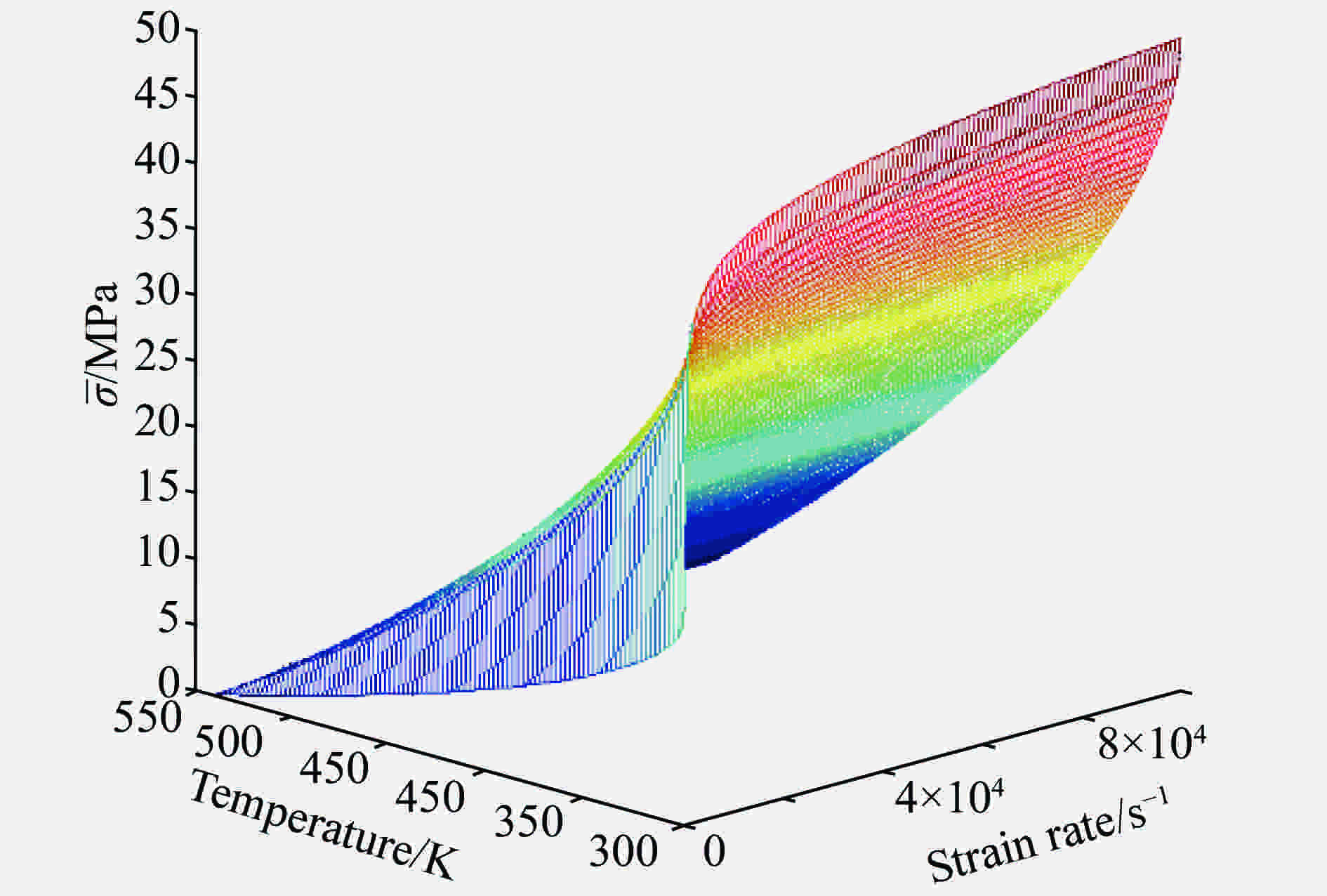
 下载:
下载:
